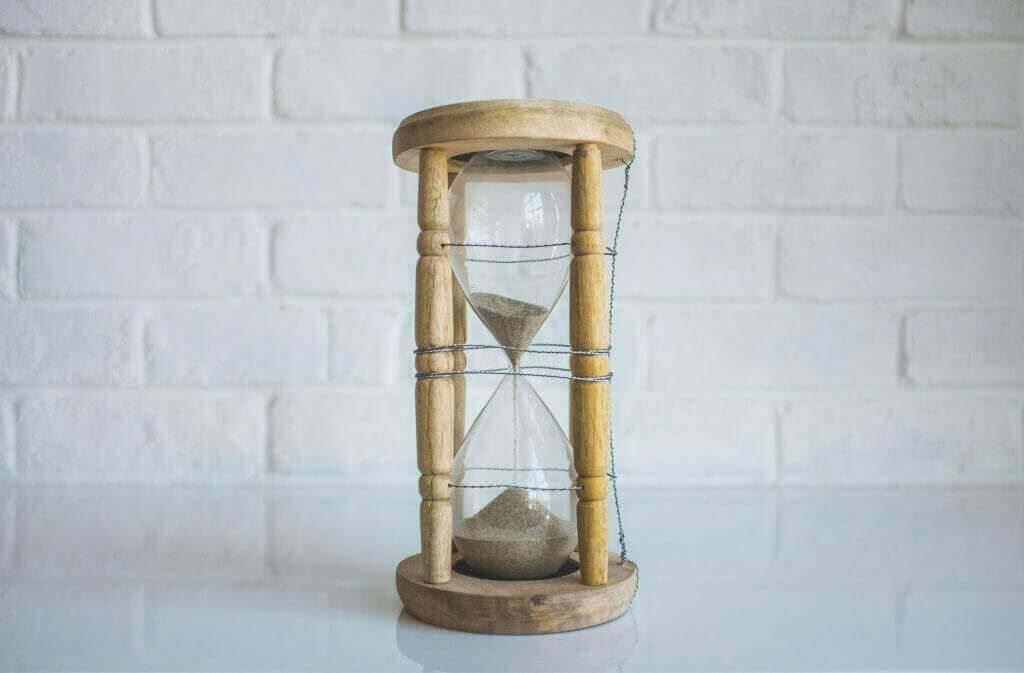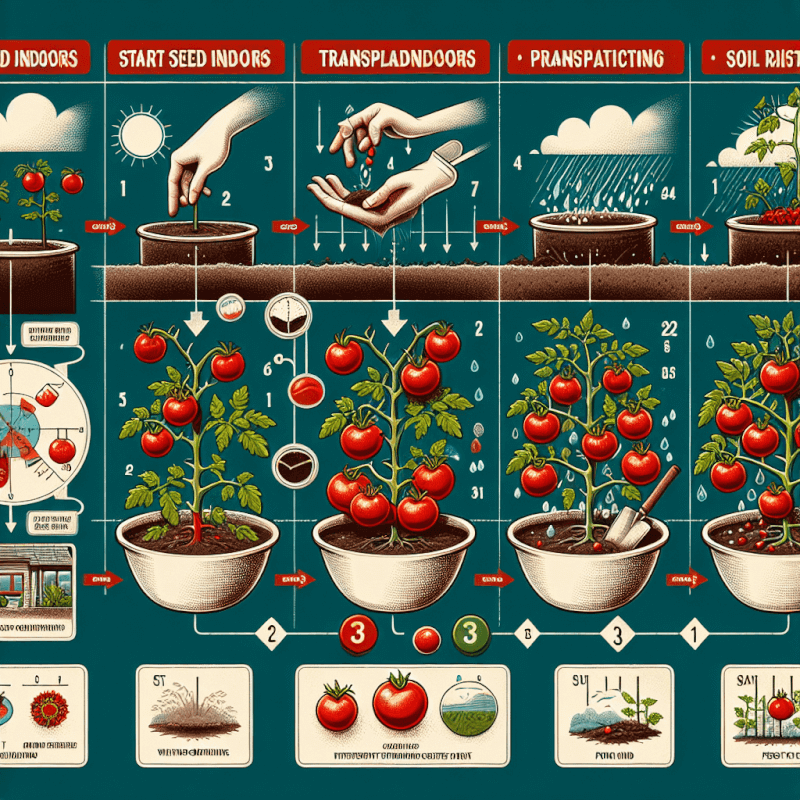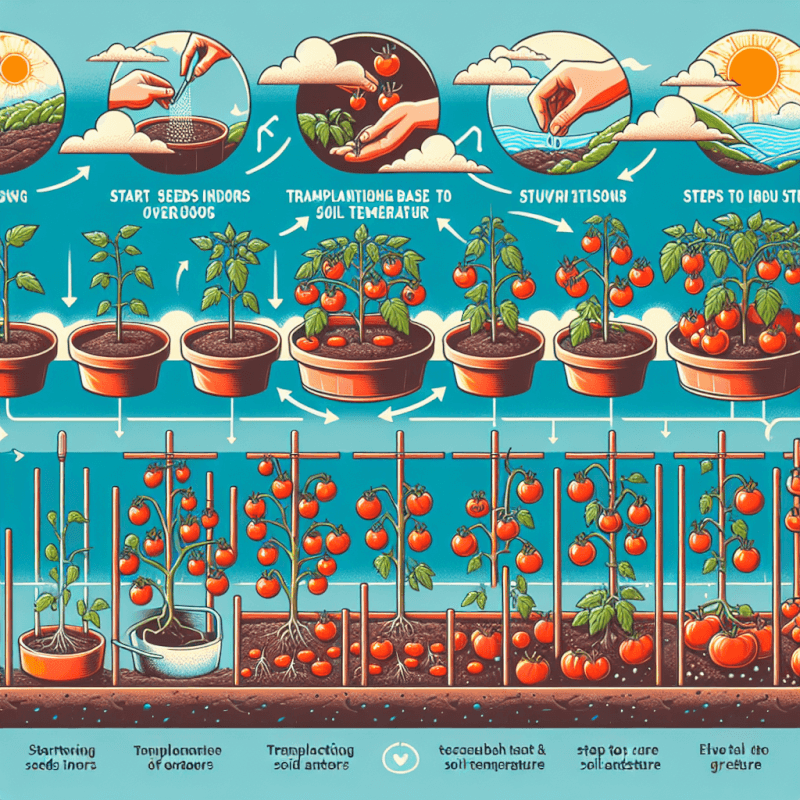👋 Click the mic button to talk to Alfred, the Todd's Seeds Gardening/Sprouting Expert – Feel free to ask him anything!
Ask Virtual Todd Anything - Click the Mic
Are you curious about the optimal time to plant tomatoes? Look no further! This article will provide you with all the information you need to maximize the success of your tomato planting endeavors. From favorable temperature ranges to crucial considerations, we’ve got you covered. So grab your gardening gloves and get ready to learn when is the best time to plant those juicy, homegrown tomatoes.
Factors to Consider
Climate
One of the most important factors to consider when determining the best time to plant tomatoes is the climate in your area. Tomatoes are warm-weather plants and thrive in temperatures between 70-85°F (21-29°C). It’s important to choose a time when the temperatures are consistently within this range to ensure optimal growth and fruit production.
Soil Temperature
Another crucial factor to consider is the soil temperature. Tomatoes prefer soil temperatures between 60-70°F (15-21°C) for successful germination and establishment. Planting too early when the soil is still cold can lead to poor growth and even the death of your tomato plants. Use a soil thermometer to monitor the soil temperature and wait until it reaches the desired range before planting.
Frost Dates
Frost dates are another important consideration when deciding on the best time to plant tomatoes. Tomatoes are highly sensitive to frost and can be easily damaged or killed by it. Frost can occur in the spring and fall, so it’s important to know the average last frost date in the spring and the average first frost date in the fall for your specific location. Planting too early, before the danger of frost has passed, can be detrimental to your tomato crop.
Transplanting Time
If you are planning to start your tomatoes from seeds indoors and then transplant them into the garden, it’s crucial to consider the transplanting time. Tomatoes are typically ready to be transplanted when they have developed their first true leaves and the threat of frost has passed. This will give them a good head start before being exposed to the outdoor elements.
Spring Planting
Advantages
Planting tomatoes in the spring offers several advantages. Firstly, the longer growing season allows for a higher chance of a bountiful harvest. Secondly, spring planting gives the tomato plants ample time to establish strong roots before the hot summer months kick in. Lastly, spring planting allows you to enjoy ripe tomatoes earlier, as they typically take around 60-80 days to mature.
Disadvantages
However, spring planting also comes with its own set of challenges. Unpredictable weather can pose a risk to young tomato plants, especially if there is a late frost or prolonged periods of cold temperatures. Additionally, spring planting requires careful monitoring of the soil temperature to ensure it is warm enough for successful germination and growth.
Steps to Follow
To successfully plant tomatoes in the spring, start by checking the last frost date for your region. Wait until after this date to plant your tomato seedlings. If you’re starting from seeds indoors, sow them about 6-8 weeks before the last expected frost date. Transplant the seedlings into the garden when they have developed their first true leaves and the soil temperature is consistently above 60°F (15°C). Provide support for the plants, such as stakes or cages, and water regularly to maintain optimal moisture levels.

Summer Planting
Advantages
While spring is the traditional planting time for tomatoes, planting in the summer also has its advantages. The warm temperatures and longer days provide optimal conditions for rapid growth and fruit production. Additionally, planting in the summer allows you to take advantage of discounted seedlings or transplants that nurseries may have available.
Disadvantages
Planting tomatoes in the summer does come with its challenges. The intense heat of the summer can stress the plants, leading to reduced fruit set and sunburned tomatoes. It’s crucial to provide ample shade and sufficient water to keep the plants hydrated and protected from excessive heat.
Steps to Follow
To successfully plant tomatoes in the summer, choose heat-tolerant varieties that will thrive in the high temperatures. Prepare the soil by incorporating organic matter and ensuring good drainage. Water the seedlings thoroughly before planting and provide shading, such as using row covers or planting near taller crops, to protect them from direct sunlight during the hottest parts of the day. Monitor soil moisture levels closely and water deeply and consistently to prevent drought stress.
Fall Planting
Advantages
Fall planting offers several advantages for growing tomatoes. The cooler temperatures of the fall result in less stress on the plants and fewer issues with pests and diseases. Additionally, the soil is still warm from the summer, providing ideal conditions for root development. Planting in the fall also allows you to extend the harvest season and enjoy fresh tomatoes well into autumn.
Disadvantages
One of the main challenges of fall planting is the risk of early frost. It’s essential to choose early maturing tomato varieties and keep an eye on the weather to ensure timely harvesting before the first frost hits. The shorter days and decreasing sunlight can also slow down the ripening process, requiring more patience to enjoy fully mature tomatoes.
Steps to Follow
To successfully plant tomatoes in the fall, start by calculating the average first frost date for your area. Count backward from this date to determine the ideal time to plant your seedlings. Choose early maturing varieties that can reach maturity within the shortened growing season. Prepare the soil by adding compost or organic matter and ensure good drainage. Water the seedlings thoroughly after planting and monitor soil moisture levels throughout the fall to ensure consistent growth.

Determining the Planting Time
Tomato Type
Different tomato varieties have specific growing requirements, including temperature preferences, days to maturity, and sunlight needs. Determining the planting time for your tomatoes will depend on the specific type or variety you choose to grow. Refer to the seed packet or plant label for information on the optimal planting time for the variety you have selected.
Local Recommendations
Local gardening experts and fellow gardeners can provide valuable insight into the best planting time for tomatoes in your specific area. They will have firsthand knowledge of the local climate, soil conditions, and any unique considerations that may affect tomato growth. It’s worth reaching out to local gardening clubs, attending workshops, or consulting with experienced gardeners to gather recommendations tailored to your region.
Experimenting with Timing
Gardening is often a journey of trial and error, and experimenting with different planting times can be an exciting way to learn more about your specific growing conditions. If you have a particular tomato variety that you’re interested in growing but are unsure of the best planting time, consider conducting a small experiment by planting a few seedlings at different intervals. This way, you can observe how the plants respond to different planting times and determine the optimal timing for future seasons.
Preparation Before Planting
Choosing Tomato Varieties
When preparing to plant tomatoes, one important step is choosing the right varieties for your specific needs and growing conditions. Consider factors such as flavor preferences, disease resistance, growth habit (determinate vs. indeterminate), and space availability. Research different tomato varieties and select those that align with your gardening goals and preferences.
Starting from Seeds vs. Buying Seedlings
Another crucial decision to make is whether to start your tomato plants from seeds or purchase seedlings from a nursery. Starting from seeds gives you more control over the entire growth process, allows for a wider selection of tomato varieties, and can be more cost-effective. However, it requires more time and effort, as you will need to provide the ideal conditions for germination and early growth. Buying seedlings, on the other hand, provides a convenient option for those who want to skip the early stages of growth and transplant directly into the garden.
Preparing Soil
Tomatoes require well-draining soil with ample organic matter. Before planting, prepare the soil by removing weeds, rocks, and debris. Incorporate compost or organic matter to improve soil fertility and structure. Test the soil pH and make any necessary adjustments to ensure it falls within the ideal range of 6.0-6.8 for optimal nutrient availability. Proper soil preparation will provide a solid foundation for healthy tomato growth and development.
Transplant Care
If you choose to start your tomato plants from seeds indoors, it’s crucial to provide proper care during the transplanting process. Harden off the seedlings by gradually exposing them to outdoor conditions, such as wind and direct sunlight, for a few hours each day. This helps them adjust to the harsher conditions they will experience once transplanted. When transplanting, handle the seedlings carefully, avoiding damage to the delicate roots. Water them thoroughly after planting to ensure they are well-established in their new environment.

Planting Techniques
Direct Seeding
Direct seeding involves sowing tomato seeds directly into the garden soil. This method is suitable for regions with long growing seasons and warmer climates. Prepare the soil by removing weeds and loosening it with a garden fork or tiller. Create shallow furrows or holes for the seeds, following the recommended spacing for the specific variety. Plant the seeds at the appropriate depth, cover them with soil, and gently pat it down. Water the soil gently to ensure good seed-to-soil contact.
Using Containers
Container gardening is an excellent option for those with limited space or poor soil conditions. Choose containers that are at least 18 inches in diameter and have drainage holes to prevent waterlogged soil. Fill the containers with a high-quality potting mix, leaving enough space for the tomato plant’s root system to grow. Plant one seedling per container, ensuring it is well-supported with stakes or cages. Place the containers in a sunny location and water regularly to keep the soil evenly moist.
Spacing and Supports
Proper spacing and providing support are essential for successful tomato growth. The specific spacing requirement and support system will depend on the growth habit of the tomato variety you choose. Indeterminate varieties, which have vining growth habits, require more spacing and sturdy support, such as stakes or trellises, to keep the plants upright. Determinate varieties, which have bushier growth habits, can be spaced closer together and may only require minimal support, such as cages or tomato spirals.
Caring for Tomato Plants
Watering
Consistent and adequate watering is crucial for healthy tomato plants. Tomatoes require approximately 1-1.5 inches of water per week, either through rainfall or supplemental irrigation. Water deeply and avoid wetting the foliage to reduce the risk of disease. Monitor soil moisture levels and adjust watering frequency based on weather conditions and the specific needs of your plants. Mulching around the base of the plants can help conserve moisture and regulate soil temperature.
Fertilizing
Proper fertilization is essential for promoting vigorous growth and high fruit production. Before planting, incorporate a balanced slow-release fertilizer or organic matter into the soil. Once the plants have established, you can provide additional nutrients throughout the growing season. Consider using a balanced liquid fertilizer or organic alternatives, following the package instructions for application rates. Avoid over-fertilizing, as this can lead to excessive vegetative growth and reduced fruit production.
Pruning
Pruning tomato plants can help improve air circulation, reduce the risk of disease, and promote higher fruit quality. Indeterminate varieties, in particular, benefit from pruning to remove the suckers that emerge from the leaf axils. These suckers divert energy from fruit production and can lead to a crowded and less productive plant. Use clean pruning shears to remove the suckers when they are small, being careful not to remove too much foliage at once.
Weeding
Regular weeding is essential to prevent competition for nutrients, water, and sunlight. Remove weeds as soon as they appear, being mindful not to disturb the tomato plant’s root system. Mulching around the base of the plants can also help suppress weed growth and conserve soil moisture. Consider using organic mulch, such as straw or wood chips, to provide additional insulation and weed control.
Pest and Disease Control
Tomatoes are susceptible to various pests and diseases, which can significantly impact plant health and fruit production. Monitor your plants regularly for signs of common tomato pests, such as aphids, tomato hornworms, or whiteflies, and take appropriate control measures if an infestation is detected. Additionally, practice good sanitation by removing any diseased plant debris and rotating tomato plants to different areas of the garden each year to prevent the buildup of soil-borne diseases.

Harvesting Tips
Knowing the Signs
Knowing when to harvest your tomatoes is key to ensure peak flavor and optimal fruit quality. Look for signs of ripeness, such as a uniform color, slightly soft texture, and easily detachable from the stem. Different tomato varieties may have specific visual cues, such as a change in color from green to red, or a slightly yellow undertone when fully ripe. Taste testing can also help determine if a tomato is at its peak of flavor.
Proper Harvesting Techniques
To harvest your tomatoes, gently twist or cut them from the vine, being careful not to damage the surrounding fruit or the plant. Handle them delicately to avoid bruising or crushing. If the fruits are not fully ripe, you can allow them to continue ripening indoors at room temperature. Do not refrigerate tomatoes unless they are overripe, as this can negatively impact their flavor and texture.
Conclusion
Planting tomatoes requires careful consideration of various factors, including climate, soil temperature, frost dates, and transplanting time. By understanding these factors and following the recommended steps for each planting season, you can maximize the chances of a successful tomato harvest. Proper preparation, adequate care, and regular monitoring for pests and diseases are essential for healthy plant growth. With the right timing and techniques, you can enjoy the satisfaction of growing your own delicious tomatoes. Happy planting!
